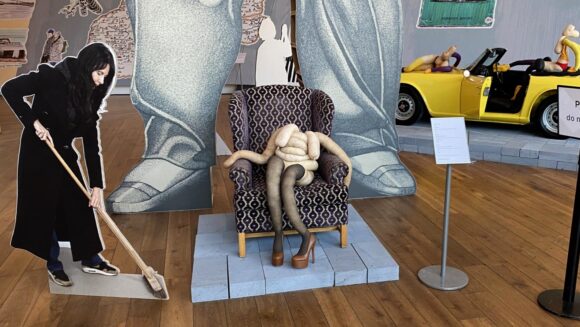
Humour is a valuable quality in art. Rembrandt with his peeing monk; Michelangelo with his foolish Boaz on the Sistine ceiling; pretty much all of Bruegel; lots of Picasso — great artists have often had great funny bones.
It is something that contemporary art has widely forgotten as it drops barbells on our spirit with its endless politicking and bores us to dormancy with its intractable identity conflicts. At too many Turner prizes, too many Serpentine doze-ins, humour has been a sad absence.
Indeed, so browbeaten have I been by the sucking piety of so much contemporary art that I had forgotten how potent humour can be in the right creative hands. Until I visited BIG WOMEN at Firstsite in Colchester. It was like getting out of the car after a long drive to Scotland and finally breathing fresh Highland air. Thank you, BIG WOMEN.
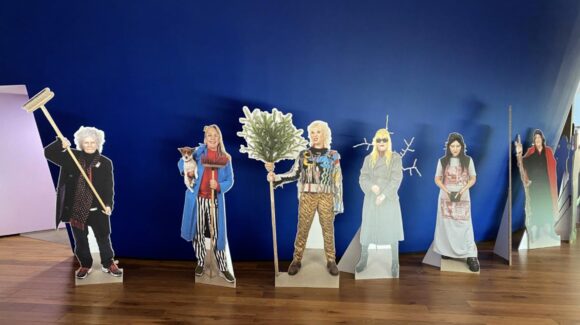
In particular, thank you Sarah Lucas, the curator and tone-setter of this joyous and feisty communal event in which a coachload of 24 middle-aged women artists have travelled to Essex to take a pop at men and express themselves loudly. Sarky, inventive, joyous, mouthy, fun, dark where it needs to be, this is the kind of show Tate Modern ought to be putting on but never does.
Ever since she emerged with the YBA generation — 30 years ago! — Lucas has kept alight the flickering flame of Great British artistic humour. This rude and unkempt daughter of Hogarth has mined the grubbiest depths of what used to be called lad culture — Loaded, page 3 of The Sun, car adverts, Playboy spreads, football graffiti — for evidence of misogyny and masculine egotism. She then displays the results with a poke in the ribs and a throaty salvo of end-of-the-pier laughter.
Here, she greets us to the show with three of her homemade sex dolls: floppy distaff womanettes constructed out of nylons, dugs and hotpants. They don’t have heads. Instead, she twists bulging sets of stuffed tights into what every watching bloke craves: extra pairs of tits.
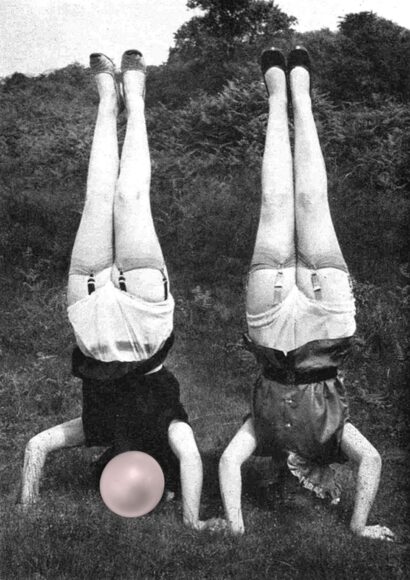
A couple of the multi-dugged womanettes have draped themselves across the bonnet of a snazzy yellow sports car. Another, loaded with a cornucopia of additional bosoms, displays herself on a rubbish bin. A third, breasts sagging, legs drooping, sits in a Coronation Street armchair like an ageing sex worker in an Amsterdam window. Big Doris is her name.
It’s accusatory art, but what lifts the jokiness into a profound arena, what gives it depth and potency, is the ambivalence of its emotional thrust. Yes, it’s aimed at the passing bloke, but also being struck here is a sad note of self-expression. Lucas, you feel, isn’t looking at Big Doris only from the outside. She’s also looking at her from the inside. Getting old, sagging baps, being watched — it isn’t just Doris’s fate.
Once started, the display keeps hunting us down. In a fabulous wheeze, all the exhibiting artists, represented by lifesize cutouts of themselves holding brooms, are scattered about the building: the witches have taken over the asylum! They range from the celebrated — Maggi Hambling, Pam Hogg, Gillian Wearing — to the obscure — Renata Adela, Millie Laws, Sonia Coode-Adams. Everybody steps up and makes it a communal effort.
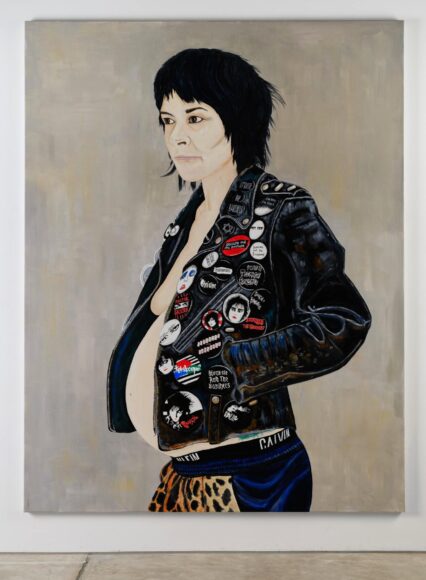
There’s an especially strong showing from Lucas’s fellow YBAs, the ex-enfants terribles who are now in their fifties and who have been idiotically forgotten by the British art establishment. Sue Webster shows herself defiantly pregnant, polka-dotted with up-yours Siouxsie and the Banshees badges pinned to her up-yours leather jacket. Georgina Starr stands on her head in suspenders and stockings as she takes the mickey out of The History of Sculpture. Abigail Lane gives us some caged birds — a jay, a female blackcap — in a poignant series called Doing Time.
They’re all so good. So full of wit and energy. Why are they so ignored? Why isn’t this lively and pertinent British female art ever shown at Tate Britain or the Serpentine Gallery? Why do we keep getting fed the same imported Identikit international biennale fodder when we have all this plangent and spiky stuff, hitting all these specifically British nerves, on our doorsteps? It’s madness.
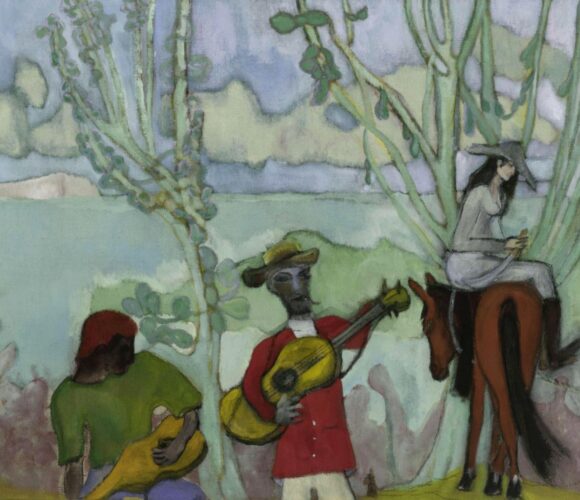
At the Courtauld Gallery, the painter Peter Doig has been given an exceptionally prestigious showing in the rooms next to Cézanne, Gauguin and Van Gogh. It’s a big promotion. Does he survive it? Almost.
For reasons I have never fully understood, Doig has become an important presence in auction art. His work sells for astronomical sums. Millionaires love him. Perhaps it’s because his produce is both comfortingly figurative and testingly elusive. When you buy Doig you buy contemporary nihilism grafted on to old master moods.
The present show features a dozen or so paintings, some of which were done in his old home of Trinidad, others completed in his new home of London. Trinidadian references dominate in the melancholy beach scenes and views of the calypso singer Shadow hurrying along the street in Port of Spain. It’s Doig at his most illustrative and least successful.
Two of the paintings, however, manage to find that mysterious sense of Caspar Friedrich spirituality he seems always to be looking for. One is a view of his teenage daughter slumped eerily in a glowing red hammock. The other shows a mountaineer, dressed as a harlequined Pierrot, at the summit of a huge alpine vista. He’s bathetic. The vista isn’t. It’s obviously some kind of self-portrait, and it’s the event’s masterpiece.
BIG WOMEN is at Firstsite, Colchester, until Jun 18; Peter Doig is at the Courtauld Gallery, London WC2, until May 29
